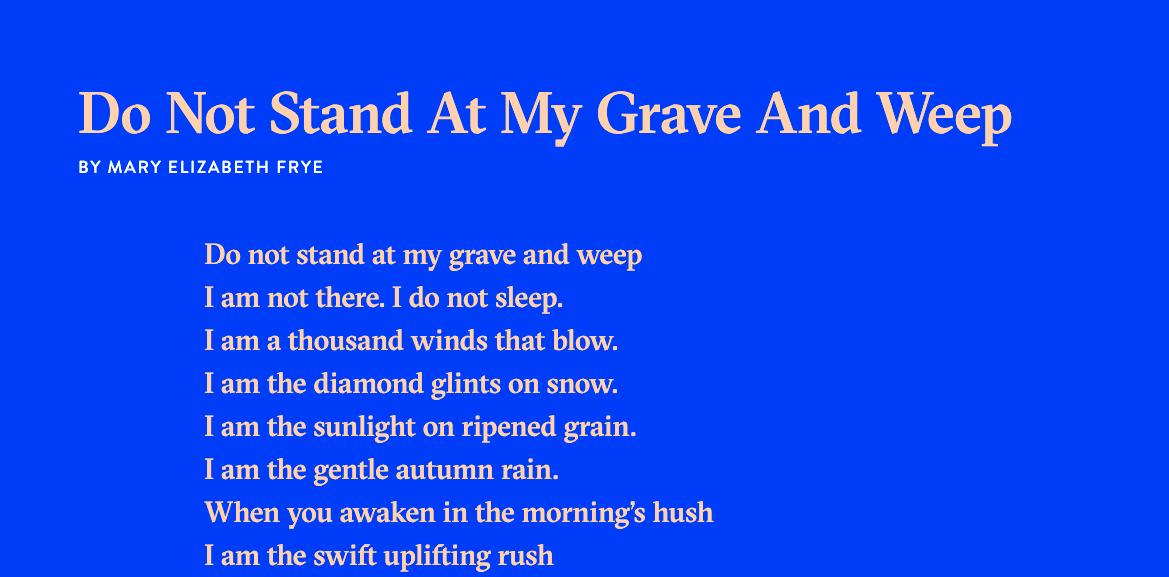

- #Author of do not stand at my grave and weep series#
- #Author of do not stand at my grave and weep tv#
I am a thousand winds that blow, I am the diamond glints on snow, I am the sun on ripened grain, I am the gentle autumn rain.
#Author of do not stand at my grave and weep series#
By the way, some critics are sure that this series was actually created as a tribute to the genius housewife, who had no formal education, but managed to create a real masterpiece. Do not stand at my grave and weep, I am not there I do not sleep.
#Author of do not stand at my grave and weep tv#
For instance, the lines of the poem can be heard more than once in one of the most successful TV series of the beginning of this century, comedy-drama film Desperate Housewives, created by Marc Cherry. The fact that this verse has almost become a folk one, can be confirmed by its popularity in mass media. In fact, I heard the birds chirp and fly away in flocks, and heard the winds blow and the raindrops pitter-patter on puddles as I read through the book in a warm and sunny side of the world. It is also Abigail Van Buren’s merit that this fact became widely known among TV audience and newspaper readers. Do Not Stand at My Grave and Weep was a sweet, soothing book of poetry, and the illustrations within made it even better. Abigail Van Buren, an American advice columnist and radio show host led a research that enabled her to confirm that the author of this simple untitled verse was actually Mary Elizabeth Frye. The poem was created in 1932, but it was not until 1998 that the identity of the author became known. Words cannot return people, but they can show death as the birth of a new life. Mary Elizabeth Frye was an American housewife and florist, best known as the author of the poem Do not stand at my grave and weep, written in 1932. Where do our dearest people disappear after death? “I am a thousand winds that blow. It gave them a chance to get rid of the feeling that, if a human life could be interrupted so suddenly and so cruelly, it has no meaning at all. Yet the name of the author remained unknown to almost all the people who sought consolation. I do not sleep” could be heard for more than 75 year, on thousands of funerals. The line “Do not stand at my grave and weep I am not there. The simple words of consolation, alluding to the Bible, really helped people to go through a loss. The person, for whom the poem was composed, was a Jewish girl who had not been able to see her dying mother in Germany because of anti-Semitic unrest. The poet herself could very well understand these feeling, as she lost her own mother at the age of three. The poem “ Do Not Stand at My Grave and Weep”, composed in the state of creative irradiation, had a certain aim: Mary Frye wanted to help a girl to go through a terrible loss, the loss of her mother. Its fame exceeded far beyond the borders of her native country. Yet, only one of them became really famous.

In fact, an American housewife, passionate florist, and avid reader, Mary Frye wrote several tenths of poems.

She could be called an author of one poem. Do not stand at my grave and weep analysis


 0 kommentar(er)
0 kommentar(er)
